Iranian Premieres
The escalation of the situation around the Islamic Republic of Iran (IRI), which not only does not correspond to Western, above all American ideas about the excellent democratic structure of society, but also supports Islamist terrorist organizations that aim to fight Israel to the bitter end, aggravated in the first half of this year, the heat of the psychological war being waged in the media space.
In response to the ongoing discussions of Iran’s nuclear program, the possible options for attacking this country, the crown of which was the statement by the head of the United States Joint Chiefs of Staff, Admiral Mike Mullen, that a force-based version of the solution to the Iranian problem was prepared in America, Tehran reports all new and new types of weapons and military equipment.
With particular ferocity, Iranian propaganda unleashed the flywheel of the information campaign by August, when local television actually talked weekly about new missiles, boats, dronescreated by IRI specialists. Understand what it is weapon and what a threat it would pose to the United States, Israel, and their allies in the event of a real war, is not easy. All information relating to the country's defense, the Iranian media is given very metered and in the best totalitarian traditions, presenting the achievements of its own defense industry exclusively in superlatives. Nevertheless, let us try to understand the real value of the new weapons of the Islamic Republic presented in the spring and summer of this year.
A common feature of Iran’s defense industry is that its own school is only emerging in such industries as the aviation, tank, ship, and engine industries. Therefore, the samples of military equipment created in Iran are mainly adapted and sometimes improved copies of Chinese, Western or Soviet products (in some cases, no less than 30 years ago), and sometimes a bizarre symbiosis of both. This is most evident in aviation and armored areas. The Iranian own-designed fighters Azarash (Lightning) and Saege (Thunderbolt) are slightly enlarged and slightly modified copies of the American F-5E Tiger II fighters, released in the early 70s and purchased by Tehran during the reign Shah of Mohammed Reza Pahlavi. In February of this year, Iran reported on the formation of the first Saege squadron. In construction tank The Zulfikar combines the reproduced and somewhat modified case and chassis from the American M60 with a turret of its own design, in which the Soviet 125A 2A46 smoothbore gun is installed. The source of the tank guns is the "cannibalization" of the early T-72 modifications. According to some reports, during the manufacture of the Azarashsh and Saeg fighter planes, some of the components are also removed from the F-5E Air Force withdrawn from combat.
"Azarach" ("Lightning")
"Saege" ("Thunderclap")
tank "Zulfikar"
In the summer of 2010, a particularly large number of Iranian innovations were demonstrated on the eve of the Defense Industry Day, which is celebrated in the country on August 21. To replenish the naval squadron, four submarines and 12 speedboats received.
The fact that the submarine forces of the Navy expects an increase, local television reported back in early August. Observers suggested that a new Kaim-class submarine with a displacement of about 1000 tons would enter into service. However, in reality it turned out that the fleet four more very small submarines of the Gadir class were handed over. The displacement of these boats does not exceed 150 tons. Armament - two torpedo tubes with a caliber of 530 mm. The construction of the Gadir class submarine began in Iran in 2007, taking into account the boats that entered service in August this year, there are 11 of them in the Iranian Navy. They are designed for operations in coastal waters, primarily in the Strait of Hormuz. Recall that in addition to 11 submarines of the “Gadir” class, the Iranian Navy currently has three Soviet-made boats of the 877EKM project, as well as four ultra-small submarines adapted for landing sabotage groups. The submarine forces of the Iranian fleet are armed with torpedoes of local production, copied from the Soviet 53-65KE and TEST-71. It was also reported that an underwater missile similar to the Russian Squall missile torpedo was created in Iran.
Considering that Iran’s surface fleet is small and equipped with outdated types of ships (commissioned in February of this year, the Jamaran own-developed corvette is not an exception), Tehran relies on submarines in a potential reflection of the aggression of the Western coalition and also on the "mosquito" fleet armed with torpedoes and rockets.
On August 10, 12 speedboats of two types, the Serak and Zulfikar, were included in the naval forces of the Iranian Revolutionary Guards Corps (IRGC) of Iran. The first one is a small-displacement fiberglass boat with 324-mm torpedo tubes. "Zulfikar" - a larger ship, which is installed on board anti-ship missiles (ASM). Apparently, we are talking about medium-range Kosar light anti-ship missiles - the Iranian version of the Chinese C-701, which in turn is based on the American AGM-65 Maverick rocket. According to Admiral Ali Fadavi, commander of the Navy of the Islamic Revolutionary Guard Corps, the IRGC will receive more 2010 speedboats during 10.
In February 2010, an important event took place in the development of the naval forces (Navy) of the Islamic Republic of Iran (IRI). The first destroyer of its own production with guided missile weapons, called Jamaran, was launched. The displacement of the destroyer was 1420 tons, and its length - 94 m. The crew, capable of speeding up to 30 nodes, includes up to 140 people. Ship armament composed from the ONO Melara 76-mm automatic artillery, small-caliber assault rifles and two paired Noor anti-ship cruise missiles (Iranian version of the Chinese C-802 rocket). The warship has a helipad and a place for launching man-portable air defense systems, as well as, apparently, anti-submarine bombers.
"Jamaran" ready for battle
Iran also succeeded in acquiring a British-built “Bredstone Challenger” boat in South Africa, on which in 2005 the record for swimming speed around the British Isles was broken (the maximum speed is 130 km / h). Tehran intends to start building copies of this boat.
In March, Iran began mass production of larger anti-ship missiles - Nasr-1 and Nur.
"Nasr-1" is a local version of the Chinese C-704 with an active radar homing head. The missile has a launch range of up to 35 km, the mass of the warhead is 130 kg. Apparently, she is able to hit ships with a displacement of about three thousand tons.
Nur is a China-made C-802, the launch range of which was increased by Iranian engineers to 170 km. The mass of the warhead of the Chinese version - 165 kg. Whether it is changed in the “Nur” version is unknown. The rocket is equipped with the first turbojet engine (TRD) produced by Iran "Tula-4", which in turn is a copy of the Italian Microturbo TRI 60.
In April, Iranian Defense Minister Ahmad Vahidi announced that the country had begun production of new Mersad anti-aircraft missile systems. According to him, the rocket is capable of destroying "a modern aircraft at low and medium altitude" and surpasses the characteristics of the American Hawk air defense system in terms of such parameters as firing range, rocket flight speed and power of a warhead. Vahidi also said that during the creation of the complex, progress was achieved in the technology of processing radar signals. It should be noted that making copies of Hawk air defense missile system Iran has already been mastered earlier, but the completion of work on its modernization indicates that the country's defense industry has achieved a fairly high level of development.
To beat or not to beat? on Iran...
Finally, the most resonant August news The presentation of the Karrar strike UAV, which was attended by President of the Islamic Republic Mahmoud Ahmadinejad and Minister of Defense Ahmad Vahidi, was the presentation of the Iranian agitprop. As was noted during the presentation, this device has a turbojet engine (probably Tulyu-4), is designed to hit targets at a distance of up to 1000 km, can reach speeds of up to 900 km/h and is capable of carrying up to four air-to-air missiles. surface” or two air bombs up to 100 kg each. The announced characteristics are at the level of world standards, however, the functionality of this drone corresponds to the same level, there are big doubts. Outwardly, the drone is similar to the Soviet reconnaissance UAV Tu-143 "Flight" or a target. The dimensions of the Carrara and the type of propulsion make it doubtful that there is enough space on board to accommodate the fuel supply necessary for a thousand-kilometer flight. Considering the fact that this drone also needs an avionics complex to hit targets with onboard weapons, the declared range seems absolutely fantastic. One can, however, assume that the true meaning of its purpose lies precisely in the external similarity of the new Iranian UAV with the target. In the event of a war, the launch of these widely advertised pseudo-strike drones in the direction of, say, Israel can cause an increased consumption of anti-aircraft missiles, which, of course, will play in favor of the military of the Islamic Republic.
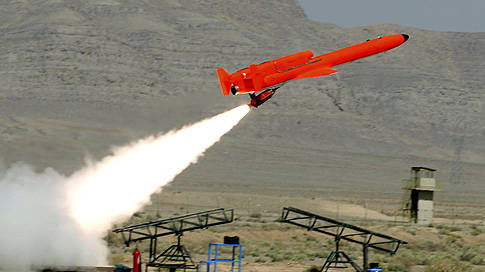
In addition, they are remarkably similar to the American Firebee and Soviet Tu-143, as well as the Italian Mirach. All of the above machines were developed in the middle of 60's based on the design of the same Brown background. An interesting feature of the Iranian "drone" is the fact that, most likely, it is a guided missile with a standard American bomb Mk 82 attached to it. It also resembles an Iranian cruise missile made on the basis of the Italian Mirach. The fighting qualities of such a novelty raise doubts, however, it should be remembered that in any case, the use of even badly guided missiles can cause serious damage.
Iranian "drone": Werner von Braun's reincarnation
Summarizing the Iranian military premieres of the first half of 2010, it can be said that Iran has made good progress in the development of the national defense industry, but the technical level of armaments is unlikely to save the country from a massive aerospace attack like a NATO operation against Yugoslavia. Serious losses to the enemy of the Iranian Armed Forces can be inflicted only in the course of contact hostilities, while the available equipment is such that it requires high motivation and readiness for self-sacrifice from personnel. It remains an open question about the compliance of the published TTH with real possibilities, as well as about the reliability of national high-tech products.
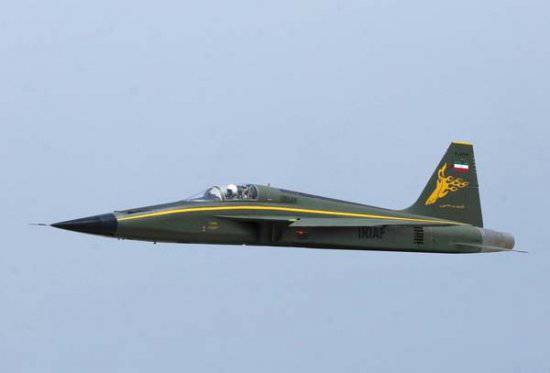
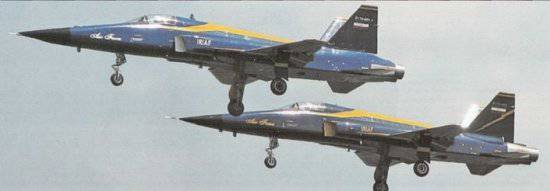
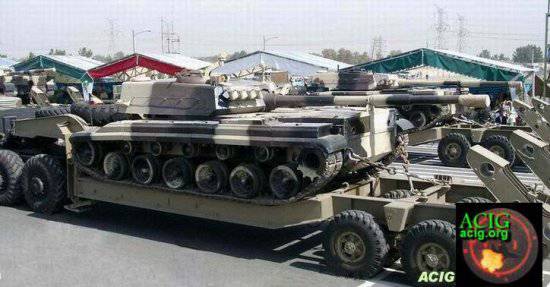
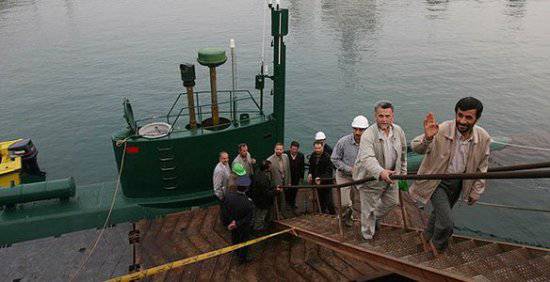
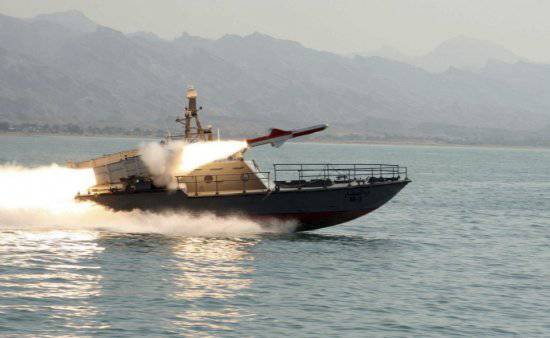
Information